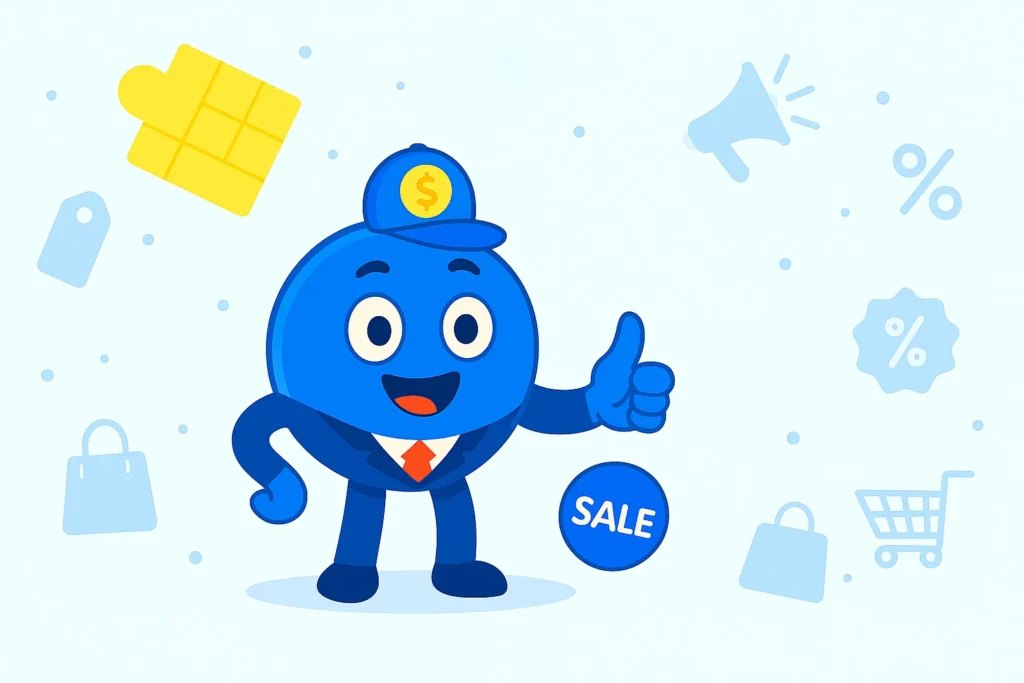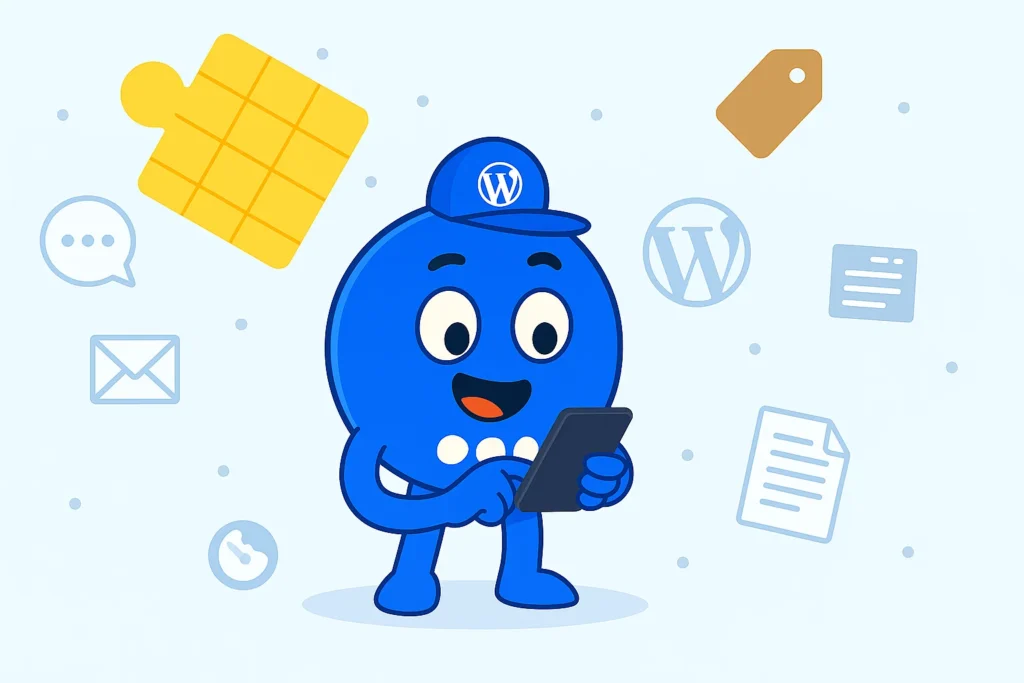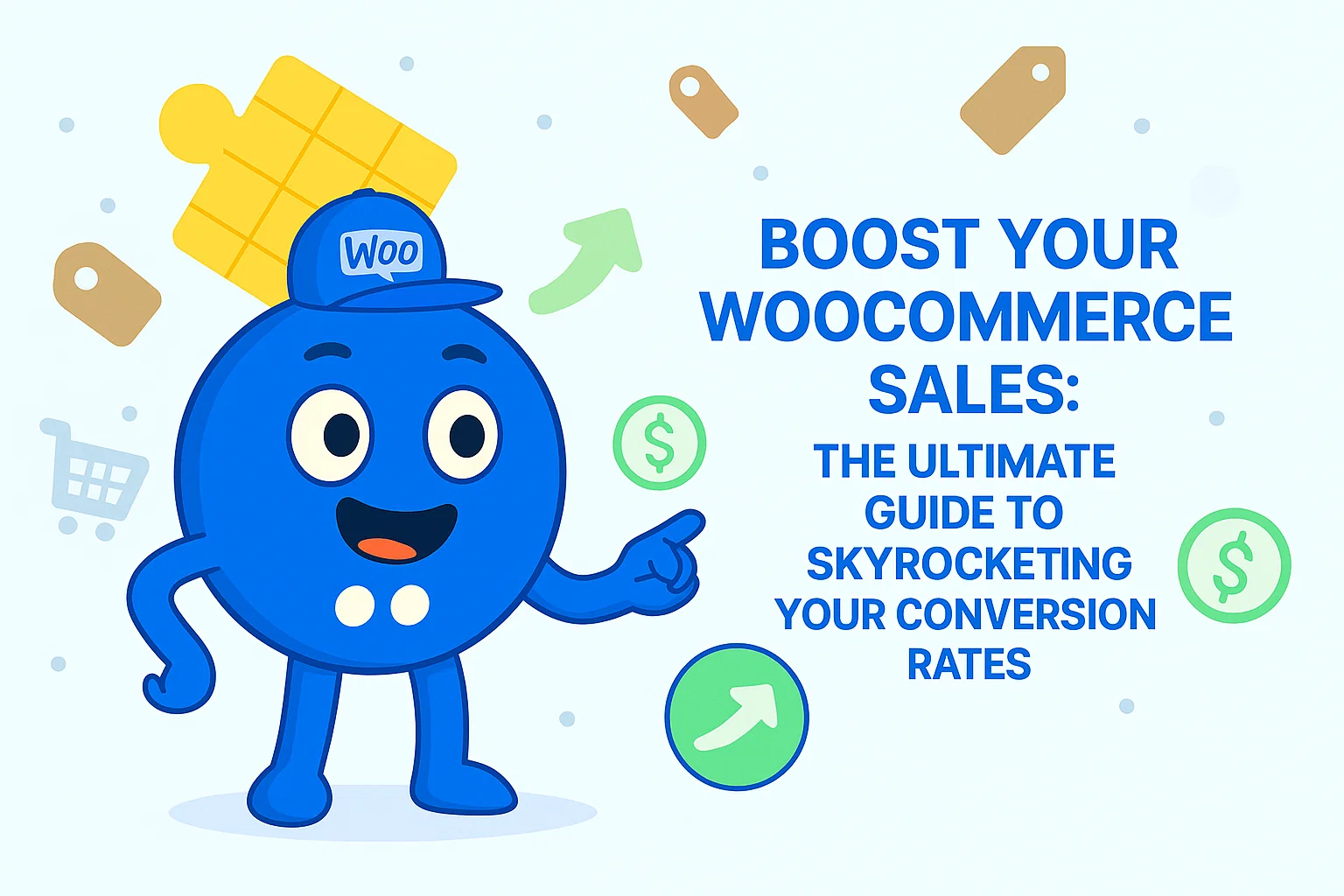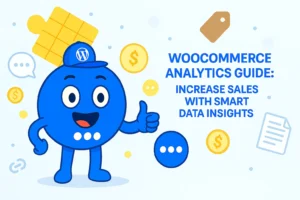Boost Your WooCommerce Sales: The Ultimate Guide to Skyrocketing Your Conversion Rates
In the dynamic world of online business, simply attracting visitors to a WooCommerce store is only half the battle. The real victory lies in converting those visitors into loyal and paying customers. This article delves into the essential strategies and practical steps required to significantly increase WooCommerce conversion rates, transforming casual browsers into committed buyers.
What is WooCommerce Conversion Rate and Why Does It Matter?

Understanding and optimizing the conversion rate is fundamental to the success of any e-commerce venture. It represents how effectively a website guides its visitors towards a desired action, such as making a purchase, subscribing to a newsletter, or booking a service. For online stores, the ultimate goal is to turn a higher percentage of traffic into paying customers.
Defining Conversion Rate
Conversion Rate Optimization (CRO) is the strategic process focused on maximizing the number of visitors who complete these valuable actions. It is a direct measure of a website’s performance in translating interest into tangible results.
Calculating a store’s conversion rate is quite straightforward. The formula involves taking the total number of desired actions (conversions), dividing that by the total number of visitors to the site, and then multiplying by 100 to express it as a percentage. For example, if a store records 100 sales from 5,000 visitors within a specific timeframe, its conversion rate would be 2% (100 ÷ 5,000 x 100).
While conversion rates can vary widely depending on factors like industry, product pricing, and the specific audience being targeted, the average e-commerce conversion rate typically falls between 2% and 4%. If a store’s current rate is below 2-3%, there is considerable room for improvement through targeted optimization strategies.

Why a Higher Conversion Rate is a Powerful Growth Lever
A higher conversion rate signifies that a business is generating more sales without necessarily needing to invest additional resources in attracting new website traffic. This is a powerful indicator of a website’s efficiency in converting interest into action, providing invaluable insights into the effectiveness of any changes implemented.
Beyond simply increasing sales volume, optimizing the conversion rate offers a cascade of benefits. It can lead to lower bounce rates (the percentage of visitors who leave a site quickly), reduced cart abandonment rates (customers leaving before completing a purchase), improved customer retention, enhanced customer trust and loyalty, and a more nuanced understanding of customer needs.
When a business manages to significantly increase its conversion rate, for instance, by doubling it from 2% to 4%, it effectively doubles its sales volume without incurring any additional expenditure on advertising or traffic generation. This directly impacts the financial health of the business by substantially lowering the Customer Acquisition Cost (CAC) per sale and dramatically improving the Return on Ad Spend (ROAS). The capital saved or newly generated can then be strategically reinvested into product development, further marketing initiatives, or operational enhancements, thereby creating a self-sustaining cycle of growth.
Furthermore, the improvements in customer retention and trust, as noted in various analyses , contribute to a higher Customer Lifetime Value (CLTV). This means each customer becomes more valuable over time, leading to more predictable and sustainable revenue streams. This perspective reveals that conversion rate optimization is not merely a tactical adjustment in marketing; it functions as a fundamental strategic lever that directly enhances a business’s profitability, scalability, and long-term viability by maximizing the value derived from every single visitor. It shifts the focus from merely attracting attention to effectively monetizing that attention.
Key WooCommerce Conversion Metrics & How to Track Them
| Metric | Definition | Formula (if applicable) | Why it Matters | How to Track |
| Conversion Rate | The percentage of total site visitors who complete a desired action, typically a purchase. | (Number of Sales ÷ Total Visitors) × 100 | Indicates overall website effectiveness in turning visitors into customers. Substantial room for improvement if < 2-3%. | Google Analytics 4 (GA4) |
| Cart Abandonment Rate | The percentage of users who add items to their cart but do not complete the purchase. | (Number of Abandoned Carts ÷ Number of Carts Created) × 100 | Highlights friction points in the checkout process; a major source of lost revenue. | GA4 (custom dashboards) , analytics tools like CrazyEgg, Mouseflow. |
| Average Order Value (AOV) | The average amount of money spent per order in your store. | Total Revenue ÷ Number of Orders | Helps understand customer spending habits and opportunities for upsells/cross-sells. | GA4 (custom dashboards) , WooCommerce reports. |
| Bounce Rate | The percentage of visitors who leave your site after viewing only one page without interacting further. | (Number of Single-Page Sessions ÷ Total Sessions) × 100 | High bounce rates often indicate poor user experience or irrelevant content. | GA4 (custom dashboards). |
| Customer Types | The ratio of new visitors versus returning customers. | (New Customers ÷ Total Customers) × 100 (and vice versa for returning) | Provides insight into customer retention and loyalty efforts. | GA4 (custom dimensions). |
The Foundation: Optimizing Your WooCommerce Store for Success
A robust and high-performing WooCommerce store forms the bedrock for any successful conversion strategy. Without a solid technical and design foundation, even the most compelling products can struggle to convert.
Lightning-Fast Performance: Speed is King!

The loading speed of a website is a critical factor, not only for delivering a positive user experience but also for achieving favorable search engine rankings. In today’s fast-paced digital environment, online shoppers have very limited patience; slow loading times are a primary cause of high bounce rates and lost sales. Studies indicate that websites loading in just one second can achieve conversion rates three to five times higher than those taking five to ten seconds to load. Moreover, search engines like Google incorporate page speed into their ranking algorithms, meaning a faster site is more likely to appear higher in search results, attracting more organic traffic.
The improvements in website speed lead to a positive initial impression and a smooth user experience, which directly reduces frustration and bounce rates. This positive experience, in turn, subtly fosters user confidence in the professionalism and reliability of the online store. When search engines observe metrics such as lower bounce rates, longer session durations, and increased engagement—all indicators of a good user experience—they interpret these as signals of a high-quality, relevant website. This positive interpretation then influences the website’s SEO rankings. Higher rankings subsequently result in more organic traffic. Because the site is already optimized for speed and user experience, this increased traffic is more likely to convert into sales.
Thus, performance optimization is not merely a technical fix; it initiates a self-reinforcing cycle of improved SEO, enhanced user experience, increased confidence, and, ultimately, higher conversion rates. Investing in website performance is therefore a strategic business imperative, contributing to a stronger brand perception, deeper customer loyalty, and a sustainable competitive advantage in the e-commerce landscape.
Here are practical steps to achieve lightning-fast performance:
- Image Optimization: Images frequently represent the largest files on a webpage. It is crucial to use appropriate formats (JPEG for photographs, PNG for graphics with transparency), compress their file sizes significantly without compromising visual quality (tools like TinyPNG, ShortPixel, or Optimole are highly effective for this), enable “lazy loading” (which delays the loading of images until they become visible in the user’s viewport), and ensure images are responsive to display correctly across all device sizes.
- Caching: Implementing caching is vital. This process involves storing static versions of web pages so they can load almost instantly for returning visitors, thereby reducing the processing load on the server. Businesses can leverage server-side caching solutions (such as Varnish or NGINX) or install WordPress caching plugins like WP Rocket, W3 Total Cache, WP Super Cache, or WP-Optimize. For WooCommerce stores, a critical consideration is to ensure that dynamic content, such as shopping cart and checkout pages, are explicitly excluded from caching to prevent functionality issues.
- Reliable Hosting: The underlying speed of a store is fundamentally dependent on its hosting provider. Selecting a high-performance, WooCommerce-optimized host (such as SiteGround, Hostinger, or Kinsta) is paramount. Such providers typically offer robust security features, 24/7 customer support, and consistently high uptime, all of which contribute to a stable and fast online presence.
- Code Optimization: Minifying and optimizing HTML, CSS, and JavaScript files can significantly reduce file sizes and improve page load times. Plugins like Autoptimize or WP Rocket can assist in minifying code (removing unnecessary characters and spaces) and deferring the loading of non-critical JavaScript files, which enhances the perceived page load speed.
- Content Delivery Network (CDN): A CDN, like Cloudflare, accelerates a store’s performance by serving static assets (images, CSS, and JavaScript files) from a global network of servers geographically closer to the user. This dramatically reduces load times, particularly for international customers.
- Database Optimization: Over time, a WordPress database can accumulate unnecessary data, which can slow down a website. Regular optimization is recommended using plugins such as WP-Optimize or WP-Sweep to clean up spam comments, post revisions, and expired transients, thereby improving database efficiency.
Crafting Irresistible Product Pages

Product pages serve as the digital storefronts where customers make critical buying decisions. If these pages are not compelling, clear, and informative, visitors are highly likely to leave without making a purchase.
Compelling Descriptions, High-Quality Visuals, and Clear Calls-to-Action:
- Product Descriptions: Descriptions should be clear, persuasive, and focused on the benefits, concisely highlighting the key advantages and features of the product. It is crucial to avoid simply
copying generic manufacturer descriptions. Instead, content should be tailored to resonate with the specific niche audience and their motivations for purchasing. For improved readability, text should be broken into scannable bullet points, utilize subheadings, and maintain short paragraphs. - High-Quality Visuals: Incorporating high-quality images is essential, showcasing multiple product angles and close-up shots of important details. Including product videos that demonstrate items in use or offering 360-degree views can significantly help customers visualize the product, thereby reducing any hesitation. All images should be compressed for fast loading while maintaining their quality.
- Clear Calls-to-Action (CTAs): The “Add to Cart” or “Buy Now” buttons should be placed prominently “above the fold” (visible without scrolling). Using contrasting colors for CTAs can make them stand out and effectively guide users to the next step in the purchasing journey.
- Essential Information: Product pages should clearly list exact measurements, specifications, and transparent pricing information, including any volume discounts. Direct links to shipping and return policies should also be provided to build customer confidence.
The product page represents a critical juncture where a potential customer transitions from casual browsing to serious purchase consideration. High-quality visuals and comprehensive, benefit-driven descriptions work to reduce perceived risk by allowing the customer to virtually experience the product. This approach answers common questions and minimizes the likelihood of returns stemming from unmet expectations.
Social proof acts as a powerful psychological validator, leveraging the collective wisdom of past buyers to overcome skepticism and build confidence. Transparent policies proactively address anxieties related to shipping, returns, or potential hidden costs.
Finally, prominent and clear calls-to-action reduce cognitive effort, making the next step in the purchase journey intuitive and obvious. A well-optimized product page functions as a highly efficient, automated sales representative, systematically addressing every potential objection or question a customer might have, thereby building confidence and guiding them seamlessly towards the “Add to Cart” decision.
The product page is not merely an information display; it is a meticulously designed conversion engine that anticipates and alleviates customer concerns, transforming passive interest into active purchase intent.
Leveraging Social Proof (Reviews, Testimonials):
- Integrating trustworthy third-party proof elements such as authentic customer feedback, ratings, testimonials, and trust badges is highly effective. This is a powerful motivator, as approximately 92% of shoppers report reading customer reviews before making a purchase.
- Displaying “Verified Buyer” badges or labels like “Bestseller” or “Customer Favorite” can highlight popular products and build social credibility.
- Implementing a robust, filterable review system on every product page is beneficial. Customers should be encouraged to leave reviews through follow-up emails sent a week or two after purchase, or by offering small incentives. Responding to reviews, especially negative ones, can further build trust and demonstrate responsiveness.
- Consider using purchase notifications (e.g., “Someone in [city] just bought this!“) to create a subtle sense of urgency and additional social proof.
Building Trust and Engaging Your Audience

In the online environment, shoppers require strong reassurance before committing to a purchase, particularly when interacting with a new store. If customers cannot easily verify a store’s legitimacy and security, they will hesitate to provide personal and payment details, leading to lost sales. Building trust is an ongoing process that must be integrated into every stage of the shopping experience.
Earning Customer Confidence with Trust Signals
Trust acts as the foundational psychological bridge that enables a customer to overcome the inherent anxieties associated with online purchases. These anxieties often include questions such as: “Is this online store legitimate?“, “Will my payment information be safe?“, “Will the product match its description?“, and “What if I need a refund?“. Without this fundamental confidence, even the fastest website, the most compelling product pages, or the most streamlined checkout process can fail because the customer will not take the final step.
Trust signals directly address these fears by providing clear visual and textual reassurances. This instilled confidence then reduces perceived risk, making the entire shopping experience, including the streamlined checkout and persuasive product page, feel safer and more credible. It serves as the emotional lubricant that allows the conversion machinery to operate smoothly. Trust is not merely a feature to be added; it is a fundamental prerequisite for sustainable e-commerce success. It fosters customer loyalty, encourages positive word-of-mouth, and ultimately extends its positive impact far beyond the initial conversion, building a strong brand reputation.
Here are the types of trust signals and their strategic placement:
- Types of Trust Signals:
- Security Badges: These are crucial visual cues such as “SSL Secure,” “McAfee Secure,” “Norton Secured,” “100% Secure Checkout,” or “End-to-End Encryption.” They immediately signal that the checkout page and the entire store are encrypted and safe, protecting sensitive personal and credit card information.
- Payment Badges: Displaying the logos of trusted payment providers like Visa, Mastercard, American Express, PayPal, Apple Pay, and Google Pay assures customers that their preferred payment method is accepted and that transactions are backed by legitimate financial platforms.
- Money-Back Guarantee Badges: Badges such as “14-Day Money-Back Guarantee” or “Risk-Free Purchase” are powerful tools. They eliminate perceived purchase risk, communicate that the business confidently stands behind its product, and reassure customers that their money is protected if they are not satisfied.
- Free Shipping Badges: These badges, like “Free Shipping on All Orders” or “Free Shipping over $50,” directly address one of the primary reasons for cart abandonment (unexpected shipping costs) and add significant perceived value to the purchase.
- Third-Party Certification Badges: Badges from reputable organizations such as the “Better Business Bureau (BBB) Accredited Business,” “TrustedSite Verified,” or “Google Certified Shops” serve as strong authority signals. They indicate that the business has passed independent checks and has received positive ratings from other popular brands, which is particularly valuable for newer stores building a reputation.
- Customer Reviews & Testimonials: This is arguably the most potent form of social proof. Approximately 92% of online shoppers read customer reviews before making a purchase. Displaying genuine testimonials, star ratings (e.g., “Rated 4.9/5 by 13,000+ Customers“), and “Verified Buyer” labels builds immense credibility and significantly influences purchasing decisions.
- Satisfaction Guarantee Badges: Examples include “100% Satisfaction Guaranteed” or “Try It Risk-Free.” These badges alleviate buyer anxiety by demonstrating confidence in the product and offering peace of mind after the purchase, encouraging shoppers to try without pressure.
- Strategic Placement: The most effective position for trust badges, especially security seals, is typically right below the “Place Order” button on the checkout page. This is precisely where shoppers often experience last-minute hesitation and require that final reassurance. Businesses should also consider adding badges to their website footer and potentially within a mini cart section.
- Best Practices: It is essential to consistently use recognizable, high-authority badges. Overloading the page with too many or low-quality badges should be avoided. Trust badges must be appropriately sized and clearly visible on mobile devices, given the high volume of mobile traffic. Finally, optimizing page speed is crucial to ensure these vital trust signals load quickly.
Mastering Mobile Optimization

In the contemporary digital landscape, mobile shopping holds a dominant position. With the majority of online shoppers browsing and purchasing on mobile devices , having a responsive and highly optimized WooCommerce store for mobile is no longer an optional feature—it is an absolute necessity. Statistics reveal that over 60% of e-commerce traffic originates from mobile devices , and a striking 77% of mobile shoppers abandoned their carts in 2023 , highlighting the critical need for a flawless mobile experience.
A truly mobile-optimized store is characterized by intuitive, mobile-friendly layouts, easy-to-use touch interactions, and fast-loading pages, all of which are crucial for preventing drop-offs and significantly improving conversion rates.
The high mobile abandonment rates and the prevalence of mobile browsing indicate that merely having a website that
adapts to smaller screens is no longer sufficient. A genuine “mobile-first” approach implies designing the core user experience for the smallest screen (mobile) first, and then progressively enhancing it for larger devices (tablets, desktops). This disciplined approach compels designers to prioritize essential content, simplify navigation, ensure clear calls-to-action, and minimize friction from the outset. It demands a focus on touch interactions , single-hand usability , and eliminating any distractions or cumbersome elements that would hinder a mobile user. This rigorous design process ultimately benefits
all users, as it results in a cleaner, more efficient, and more focused user interface across all devices. Mobile optimization is not just a technical checklist item or an afterthought; it is a fundamental strategic design philosophy. By prioritizing the mobile experience, businesses are compelled to create a more streamlined, intuitive, and efficient user journey, which directly translates into higher engagement and conversion rates, regardless of the device used.
Here are practical steps for mobile optimization:
- Ensure the WooCommerce theme is inherently responsive (e.g., themes like Botiga, Neve, or Divi are specifically designed for this).
- Utilize touch-friendly navigation with sufficiently large and easily tappable buttons.
- Streamline checkout forms and reduce steps specifically for mobile users, where screen real estate and attention spans are limited.
- Maintain a prominent and easily accessible search bar on mobile interfaces.
- Optimize all images to appear crisp and load quickly across various mobile devices.
Smart Pricing Strategies & Promotions

Beyond merely attracting visitors, strategic pricing and well-executed promotions are powerful tools that can significantly boost sales and increase the average order value.
- Tactics:
- Discounts & Incentives: Offer compelling incentives such as store credit coupons, “Buy One Get One” (BOGO) deals, and dynamic discounts to encourage repeat sales and foster customer retention. Make discounts visually appealing by adding savings labels like “Save 20%” or “Free Shipping on Orders Over $50“.
- Psychological Pricing: Employ pricing strategies that subtly influence purchasing decisions. For example, pricing items at $9.99 instead of $10 can psychologically nudge customers towards a purchase by making the price seem lower.
- Urgency & Scarcity (FOMO): Create a sense of urgency or Fear of Missing Out (FOMO) by displaying low-stock warnings (e.g., “Only three left in stock“) or promoting flash sales and time-sensitive deals with countdown timers. These tactics can drive immediate conversions.
- Upsells & Cross-sells: Strategically suggest complementary products or frequently bought-together items on product pages, in the cart, or during checkout. This can significantly increase the average order value. Personalized recommendations based on browsing history or past purchases can further enhance effectiveness.
- Bundling: Offer product bundles at a slightly reduced price compared to purchasing items individually. This encourages customers to buy more, increasing the average order value.
Strategic pricing and promotions play a crucial role in guiding customer behavior and maximizing the value derived from each transaction. They are not just about reducing prices but about creating perceived value and motivating specific actions.
The Floating Awesome Button: A Conversion Power-Up
In the fast-paced world of e-commerce, capturing and maintaining customer attention is paramount. While traditional calls-to-action can get lost, a persistent, highly visible element can significantly enhance user engagement and guide visitors towards desired actions. This is where a tool like the Floating Awesome Button (FAB) comes into play.
What is the Floating Awesome Button?
The Floating Awesome Button is a versatile WordPress plugin designed to create customizable sticky action buttons. These buttons remain visible on the screen even as users scroll, ensuring that important calls-to-action are always accessible. They can serve various purposes, such as smooth scroll-to-top functionality, quick access to support, or displaying custom pop-ups containing promotional offers, product showcases, or newsletter sign-up forms.
How FAB Boosts WooCommerce Conversions
FAB acts as a persistent, non-intrusive guide for visitors, akin to a virtual sales assistant that follows customers around the store. This constant visibility ensures that key messages or offers are always just a click away, making it effortless for users to take action.
- Maximum Visibility: FAB buttons float above content, meaning product promotions or calls-to-action are never hidden or scrolled away. Visitors consistently see the featured item or offer, regardless of their position on the page. This increased visibility leads to higher click-through rates (CTR), with statistics suggesting that effective CTAs can boost conversion rates by 10-20%.
- Strategic Call-to-Actions (CTAs): Unlike conventional CTA buttons that may only appear at specific times, floating action buttons are persistently visible, allowing visitors to take action at any point. They can link directly to product pages, reducing friction in the buying process.
- Highlighting Products & Promotions: A business can turn any WooCommerce product into a floating featured button, placing it front and center on every page. This is ideal for flash sales, new arrivals, bestsellers, or limited-time offers, ensuring users do not miss them.
- Streamlining Support & Reducing Cart Abandonment: FAB can provide quick access to support channels, reducing frustration and potentially preventing cart abandonment. By offering a “second chance” to engage with an offer or complete a purchase, floating buttons can recover lost conversions.
- Mobile-First Experience: Given the dominance of mobile traffic in e-commerce, FAB buttons provide a responsive and user-friendly way to grab attention without relying on clunky banners or pop-ups that perform poorly on smaller screens. Their size and position can be customized per device, with a recommendation to place them in a bottom corner for easy one-handed mobile clicking.
- Zero Coding Required: The plugin is designed for ease of use, allowing customization of colors, sizes, shapes, and text without requiring any coding knowledge.
Practical Implementation
Integrating the Floating Awesome Button into a WooCommerce store is a simple process:
Step 1: Install the FAB Plugin
- Log in to your WordPress dashboard.
- Go to Plugins > Add New.
- Search for “Floating Awesome Button”.
- Click Install Now, then Activate.
Step 2: Create Your First Floating Button
- Once activated, go to FAB > Add New FAB.
- Select desired floating button template click
+ Add New
Step 3: Customize the Button
- Select an icon.
- Pick a position on the screen (bottom-right, bottom-left, etc.).
- Customize the color, size, and animation.
Step 4: Save and Preview
- Hit Publish to make the button live.
- Visit your website to see it in action and make sure it works across desktop and mobile.
By leveraging the Floating Awesome Button, businesses can create a seamless path for visitors to engage with their store, featuring key products, creating urgency, and offering easy access to essential actions, all without interrupting the browsing experience.
Conclusion: Your Path to WooCommerce Conversion Mastery
Increasing WooCommerce conversion rates is not a single action but a holistic, ongoing commitment to understanding and enhancing the customer journey. It involves a strategic blend of technical optimization, compelling design, psychological persuasion, and continuous data analysis.
The foundation of a high-converting store rests on lightning-fast performance, ensuring visitors experience a seamless and frustration-free browsing environment. This speed not only delights customers but also signals quality to search engines, creating a virtuous cycle of improved visibility and engagement.
Crafting irresistible product pages that are rich in detail, high-quality visuals, and authentic social proof transforms casual interest into purchase intent by proactively addressing customer questions and building confidence. Simultaneously, streamlining the checkout experience by minimizing friction points—such as reducing form fields, offering guest checkout, and providing diverse payment options—is paramount to preventing last-minute abandonment.
Crucially, earning customer confidence with trust signals is the psychological bedrock of online commerce. Visible security badges, clear guarantees, and genuine testimonials alleviate anxieties, making customers feel secure in their purchase decision. This confidence is further amplified by mastering mobile optimization, recognizing that the majority of today’s shoppers interact with stores on their phones, demanding a fluid and intuitive mobile-first experience.
Smart pricing strategies and promotions, coupled with engaging content and robust SEO, work in tandem to attract, nurture, and convert visitors, while personalization and loyalty programs foster long-term relationships and drive repeat business.
Finally, the journey to conversion mastery is cyclical. It relies heavily on continuous improvement through rigorous testing and analytics. By diligently tracking key metrics, analyzing user behavior with tools like Google Analytics and heatmaps, and conducting A/B tests, businesses can make data-driven decisions that iteratively refine their store’s performance.
By embracing these interconnected strategies and consistently optimizing every touchpoint of the customer journey, WooCommerce store owners can unlock significant growth, turning more visitors into loyal customers and ultimately skyrocketing their sales.







